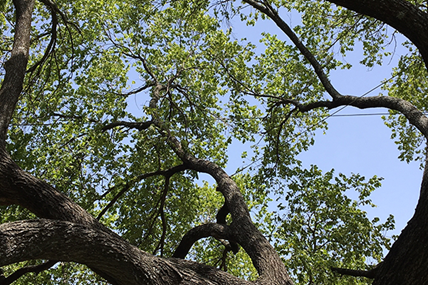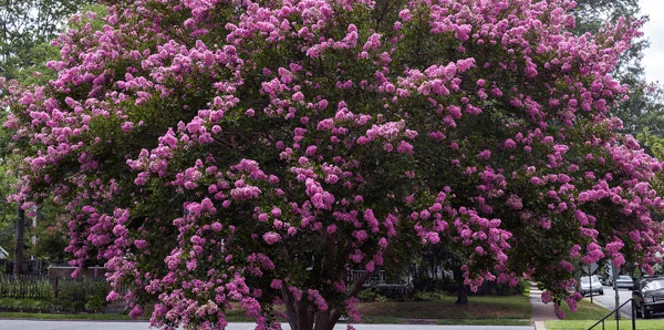Winter scenery can be quite beautiful with bright, white snow covering our yards, and bare trees dusted with flakes or shimmering with a coating of ice. But as temperatures get cooler and snow gets heavier, Mother Nature’s decoration on our trees can end in a not-so-pretty result.
Snow and ice that packs on to tree branches can lead to stress and potential damage. Trees like pines and spreading or multi-stemmed hardwood trees (such as river birch and silver maple) tend to suffer the worst damage, while younger trees tend to survive better in ice storms.
Whatever type of tree you’re dealing with, being proactive before and after a snowfall can help maintain tree health.
How do snow and ice pose a threat to trees?
Snow and ice on trees can weigh down limbs and branches with many times their normal weight, ultimately causing broken and damaged trees. Trees that are unprepared to bear the extra weight need attention before severe winter weather kicks on.
Prepare your trees for winter weather
The weather is still mild for some of us, leaving the opportunity to protect branches against breakage. Branches can be loosely cabled and braced (pictured) before winter elements roll in to prevent branch failure.

Pruning is another pre-winter task to help eliminate already weak and broken branches. Reducing the length of over-extended branches is one important way to prevent them from breaking. Proper pruning is the best way to stop ice from damaging your trees.
Do's and Don'ts After It Snows
It is important to avoid shaking branches that are coated with snow and ice. The ice cover makes limbs brittle and shaking a frail branch can do more harm than good. Additionally, knocking off the weight may cause the branch to “snap back,” potentially damaging the circulatory system. The best solution is to allow the branch to melt naturally.
If your area just received a light snowfall, you can take the time to gently remove snow from branches of shrubs and small trees before it freezes solid or more snow falls and adds extra weight.
Beyond care for your trees, make sure you are looking out for the safety of yourself and your property. Always be mindful of branches weighed down by snow or ice as they many snap and fall causing injury or damage. Think about where you do things like walk, stand, and park vehicles where there is a risk of branch failures.





